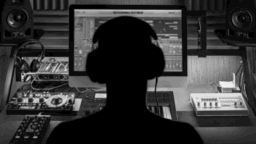Music streaming services generated almost a billion dollars more for labels and artists in 2015 than they did the year before – but record companies say that figure should have been a lot higher.
New market numbers from IFPI released today show that the recorded music industry’s wholesale value (that’s the cash actually coming through the door for artists and labels) increased by 3.2% last year, up slightly above $15bn.
The good news for the music business: That’s the highest uptick in growth since way back in 1998, and the first growth of any sort since 2012, when the market was up just 0.3%.
(IFPI’s figures for 2014 have been revised slightly due to constant currency and a performance royalties adjustment. Last year’s official global tally now stands at $14.5bn.)
Across the world in 2015, digital music contributed $6.7bn – or 45% of the total sum – and was up 10.2%.
Digital was comfortably worth more than physical, according to IFPI, which claimed 39% of total income (approx $5.9bn).

Now, onto streaming.
Across both ad-funded and premium streaming services, streaming was worth $2.9bn to labels and artists.
That represented a near-billion dollar rise on 2014’s $2bn tally.
Streaming claimed 19% of total recorded music industry revenues in the year, running downloads very close, which were down 10.5% to generate $3.0bn.
(If you considered Japan as an anomaly at the top of the global market and removed it from these figures, then streaming would almost certainly overtake downloads worldwide.)
Drill down further into streaming, and the recorded music’s industry’s biggest bugbear of the moment very much comes to light.
Premium services such as Apple Music, Google Play Music, Tidal and Spotify‘s paid-for tier contributed $2.0bn of streaming’s $2.9bn annual total.
The total number of people paying for a streaming service in 2015 grew to 68m – which means these people were spending an average of $42 each across the year.
[Update: To be clear, this $42 figure is worked out by adding the 30% margin taken by most streaming sites back onto the wholesale ARPU demonstrated by IFPI’s figures of $29.41.]
Contrast that with the number of people using ad-funded services for music, a group which numbered 900m, according to IFPI estimates.
These ad-funded services contributed $634m to the total pot last year – less than a third of the revenues handed over by premium services.
The $634m figure means that those 900m people, on average, generated 70 US cents each for labels and artists across the whole of 2015.
Per person, that’s around $41 difference per year compared to premium services. And when you’re talking about hundreds of millions of people, that stings.

IFPI is making no bones about where to point the finger.
IFPI Chief Executive Frances Moore said: “This should be great news for music creators, investors and consumers. But there is good reason why the celebrations are muted: it is simply that the revenues, vital in funding future investment, are not being fairly returned to rights holders.
“The message is clear and it comes from a united music community: the value gap is the biggest constraint to revenue growth for artists, record labels and all music rights holders. Change is needed – and it is to policy makers that the music sector looks to effect change”.
There it is again. The ‘value gap’: the distance between consumption on services such as YouTube – mainly YouTube, really – and the amount of money they’re paying out.
A YouTube spokesperson told MBW: “To date, Google has paid out over $3 billion to the music industry – and that number is growing significantly year on year.
“Only about 20 per cent of people are historically willing to pay for music. YouTube is helping artists and labels monetise the remaining 80 per cent that were not previously monetised. The global advertising market is worth $200bn. This is a tremendous opportunity.”
In less frosty territory, there was also good news from performance rights.
Revenue generated through the use of recorded music by broadcasters and public venues increased 4.4 per cent to US $2.1 billion in 2015, says IFPI.
This revenue stream now accounts for 14 per cent of the industry’s overall global revenue, up from 10 per cent in 2011.Music Business Worldwide




